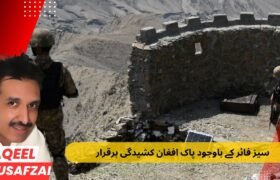The Peshawar Namak Mandi famous for its sumptuous traditional lamb karai also holds the province’s biggest market for precious and semi-precious stones extracted both from Pakistan and Afghanistan.
Gemstone businesses were established in 1980s mainly by Afghan refugees in Peshawar. Prior to the Soviet Afghan War (1979-1989), the Afghan government had banned the mining of gems but post-war, the lack of government control in several parts of Afghanistan, allowed miners to start their own businesses. It was around this time that the Namak Mandi gemstones market was established. At that time Afghan traders captured almost 75 percent of the market.
Later on, the increase in demand for gems resulted in mining in various parts of Khyber Pakhtunkhwa and ex FATA.
Different parts of the province are famous for different gems, for instance, Emerald of Swat, Rubies of Azad Kashmir, Pink Topaz of Mardan, Aquamarine and Tourmaline of Gilgit and Chitral, Peridot of Kohistan, and Pargasite of Hunza. These gems have beautiful attractive colors, crystal clarity and a range of sizes as well as weight, meeting any international standard. All these precious gems make Pakistan prominent in the mineral world. But it is a fact that most of these gems are extracted from the areas of Gilgit and mine-diggers can only work for three months due to weather barriers.
According to the merchants in market, Swat mines have around 70 million carats of Emeralds, these are not only the best in South Asia but are renowned for their quality globally. Research has proven that these mines were famous for 2,500 years ago and that the ancient Romans had a proclivity for deep green Swati Emeralds. These high-quality Emeralds are also used in Swiss watches. Chinese buyers used to purchase these gems in Namak Mandi, cut and polish them and then sell out to luxury watch makers around the world fetching thousands of dollars.
A gemstone trader at Namak Mandi market says Pakistani gemstones have great potential and demand in abroad but we don’t have technological know-how to promote our stones in the global market. He added that most of the gemstones are purchased in their raw form, fetching far lower prices than the cut and polished pieces. These raw pieces are taken to Thailand for refined cutting as such a facility is not available in Pakistan.
For decades, this market has remained a center for traders from around the world. Before the security environment in the region became shaky due to 9/11 incident, the gemstone traders in the province drew tourists from Canada, America, Australia, and Europe. Now hardly the Chinese traders visit the market. According to the gemstone dealers union, the industry has brought home around $27.562 million in terms of foreign exchange in the last five years.
In 2002, the Gems and Gemological Institute of Pakistan (GGIP) was established with the aim to support the gemstone industry as a joint venture between the government and private sector. However it did not show performance and failed to do what it was set out for.
The Gems and Mineral Show of Pakistan was also initiated in 1994 to attract foreign buyers, but it went on a seven years hiatus when the militancy was at peak in KP and only restarted in 2015, with the venue shifted from Peshawar to Islamabad. For two years the show was held in Islamabad in 2015 and 2016. But it was held in Peshawar again in 2017 after the gap of nine years. The traders were very encouraged by the feedback.
Despite this course of actions the traders in Namak Mandi are disquiet regarding their business. They say that security concern, terrorism and bureaucratic red tape have effectively suppressed this industry. And that this sector is highly dependent on foreign buyers. If they do not come to Peshawar, these traders get no business.
According to these merchants, even though Pakistan has abundant resources of many precious stones, it is still unknown for one of its greatest natural gifts and it rarely figures at an international level when discussing the gem trade. Some of them complaint that the facilitators of grey area trade are rebranding Pakistani gems, as local merchants simply do not have the ability to ship them out by themselves. As a result of this the government is losing precious tax dollars.
They demand the concerned authorities to draw out help to arrange seminars and to project these gemstones, which will woo international investors and buyers.
However, the directorate of mines and minerals has issued a statement that the department would extend all our support to the gemstone businessmen, which would leave far-reaching positive impact on the country’s economy in long-run.
The government should utilize the bountiful supply of these amazing stones in a responsible manner by sharing with the world the riches it has been blessed with. Hence this sector could hugely contribute in national exchequer.




